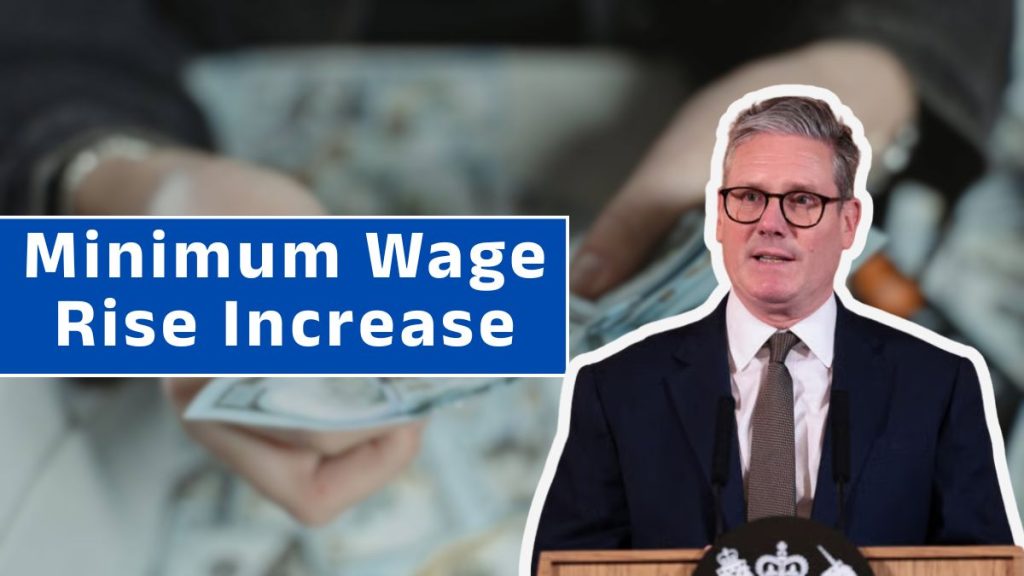The UK government has confirmed a new round of minimum and living wage increases, effective September 2025. This announcement directly impacts millions of workers across the country, especially those in hospitality, retail, care services, and apprenticeships. For employees, it promises larger pay packets to offset soaring costs of living. For employers, it introduces higher payroll obligations that must be factored into budgets.
The rise comes at a crucial time, with households facing record costs in energy, rent, food, and transport. While the changes will bring relief to low-paid workers, they also present new challenges for businesses already under pressure from inflation and labour shortages.
What Is the Minimum Wage?

The National Minimum Wage (NMW) is the lowest hourly rate employers are legally allowed to pay. The National Living Wage (NLW) is a higher rate applied to workers aged 21 and over.
Both rates are set annually by the Low Pay Commission and enforced by the government. Employers who fail to comply face:
- Fines of up to £20,000 per worker
- Repayment of underpaid wages
- Public listing on the government’s name-and-shame register
The September 2025 announcement reflects the government’s ongoing strategy to balance worker protection with economic sustainability.
Quick Summary – UK Minimum Wage September 2025
| Aspect | Details |
|---|---|
| Announcement | New UK Minimum Wage Rates |
| Effective Date | September 2025 |
| Authority | UK Government / Low Pay Commission |
| National Living Wage (21+) | £11.44 per hour |
| 21–22 Year Olds | £11.44 per hour (merged with NLW) |
| 18–20 Year Olds | £8.60 per hour |
| 16–17 Year Olds | £6.40 per hour |
| Apprentices | £6.40 per hour |
| Enforcement | HMRC – fines, repayment, and compliance audits |
| Official Website | www.gov.uk |
New Wage Rates Effective September 2025
From 20 September 2025, the new rates will apply across all eligible workers:
- National Living Wage (21+): £11.44 per hour
- 21–22 year olds: £11.44 per hour (aligned with NLW)
- 18–20 year olds: £8.60 per hour
- 16–17 year olds: £6.40 per hour
- Apprentices: £6.40 per hour
This is particularly significant for apprentices and younger workers, who have received the largest percentage increases compared to previous years.
How Much More Will Workers Earn?
For full-time employees working 37.5 hours per week, the wage increase means thousands of pounds more annually:
- 21-year-old worker: ~£22,308 per year
- 18-year-old worker: ~£16,770 per year
- Apprentice: ~£12,480 per year
For part-time employees, the increase ensures higher hourly pay while still offering flexibility for students, carers, and parents balancing multiple responsibilities.
Why Is the Wage Increasing?
Several economic and social factors underpin the government’s decision:
- Inflation Pressures – With food, fuel, and rent soaring, higher wages aim to safeguard workers’ purchasing power.
- Labour Shortages – Rising vacancies in care, hospitality, and retail demand more competitive pay.
- Fair Work Agenda – The government has pledged to reduce in-work poverty and create a fairer labour market.
- Economic Growth – Higher disposable income encourages consumer spending, stimulating the economy.
Impact on Workers
The wage hike benefits millions, particularly in low-wage industries:
- Hospitality and Retail – Large workforces on minimum pay will now receive boosts.
- Care Services – Carers and healthcare assistants often paid near NLW will see improvements.
- Apprenticeships – Pay increases encourage more young people to take up skilled trades.
- Part-Time Jobs – Students and working parents benefit from fairer hourly pay.
For many households, this means better financial security, helping cover rent, bills, transport, and childcare costs.
Impact on Employers
While employees gain, businesses must adapt.
- Hospitality Businesses – Rising wage bills for seasonal and part-time staff.
- Care Providers – Increased costs with limited flexibility to raise prices.
- Small Shops and SMEs – Some may reduce hours, increase automation, or pass costs onto consumers.
Non-compliance is risky:
- Fines of up to £20,000 per underpaid worker
- Orders to repay arrears
- Public exposure damaging brand reputation
Regional Living Costs – A Key Debate
Although the rise is welcomed, campaigners argue it still falls short of real living costs, especially in high-expense areas:
- London Living Wage 2025 (real measure): £13.15/hour
- Outside London (real living wage): £12.00/hour
The September 2025 rise to £11.44 improves conditions but does not fully match actual cost-of-living standards.
Apprentices and Young Workers – The Biggest Winners
The largest increases benefit apprentices and young workers. By aligning 21–22 year olds with the NLW, the government eliminates unfair age-based discrepancies, ensuring fairer pay for all young adults entering the workforce.
This could encourage more young people to join apprenticeships, boosting the UK’s skilled labour pool.
International Comparisons
With this increase, the UK minimum wage becomes one of the highest in Europe:
- UK: £11.44/hour
- Germany: €12.41 (~£10.60)
- France: €11.65 (~£9.90)
- Spain: €8.45 (~£7.20)
However, the UK also has higher housing, transport, and energy costs, which limits the real impact of the increase.
Long-Term Implications
The September 2025 rise is part of the government’s plan to create a sustainable fair pay system. However, experts warn that businesses must adapt with:
- Automation and efficiency to offset costs
- Flexible contracts to manage staffing levels
- Regional pay considerations to reflect varied living costs
If successful, the rise could reduce in-work poverty and strengthen the UK’s labour market competitiveness.
Conclusion: Relief for Workers, Challenges for Employers
The September 2025 minimum wage increase is a welcome boost for workers struggling with rising living costs. For employers, it’s a call to prepare for higher payroll costs and compliance responsibilities.
While the new rates bring the UK closer to real living wages, campaigners continue to push for further increases to truly match modern-day expenses.
The change represents a balancing act: supporting households, sustaining businesses, and boosting the economy.
FAQs on UK Minimum Wage September 2025
Q1. When does the new minimum wage take effect?
The new rates apply from 20 September 2025.
Q2. What is the new National Living Wage for 2025?
The NLW for workers aged 21 and over will rise to £11.44 per hour.
Q3. How much will apprentices earn after the rise?
Apprentices will earn at least £6.40 per hour, equivalent to ~£12,480 annually for full-time work.
Q4. What happens if employers fail to pay the new rates?
Employers face fines of up to £20,000 per worker, repayment obligations, and public naming by HMRC.
Q5. Does the increase match the real cost of living?
Not fully. Campaigners argue the real living wage is £13.15 in London and £12.00 elsewhere, higher than the new £11.44 NL















